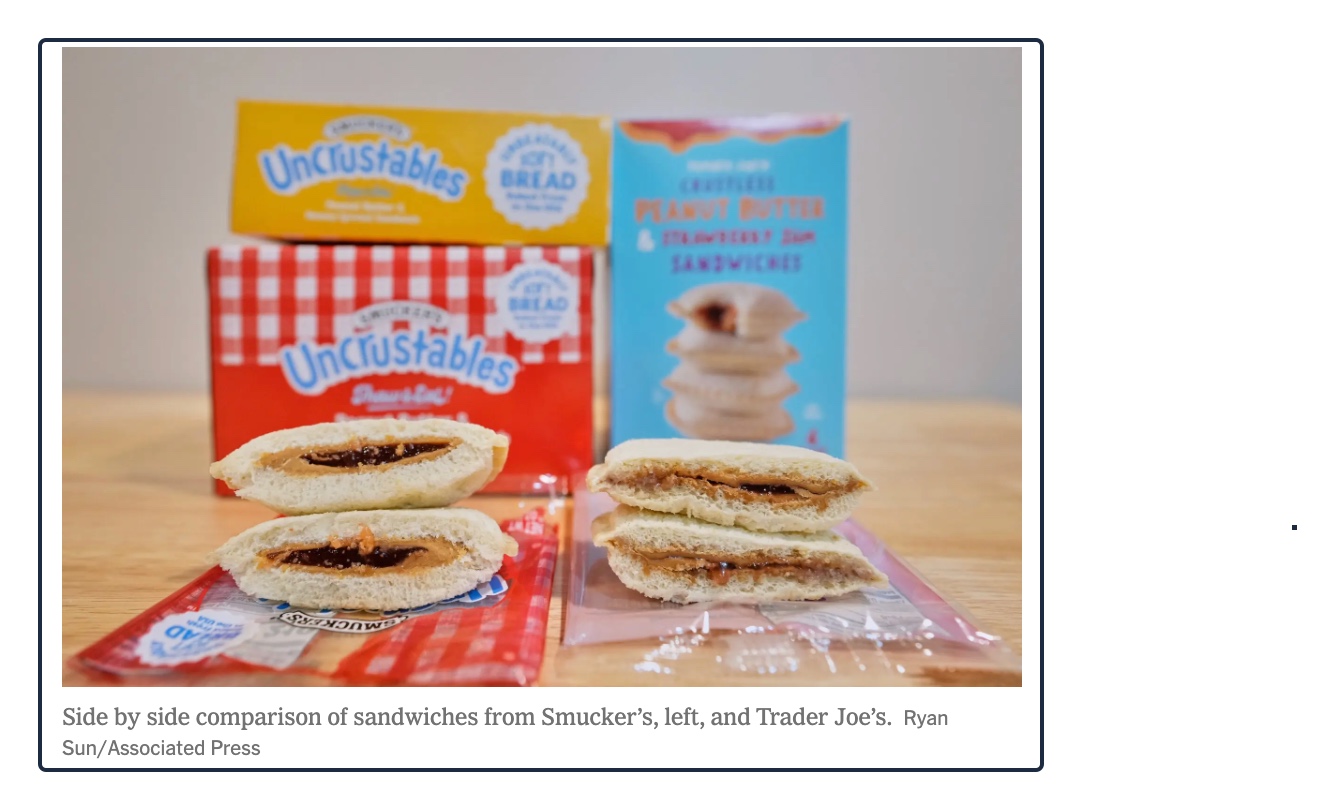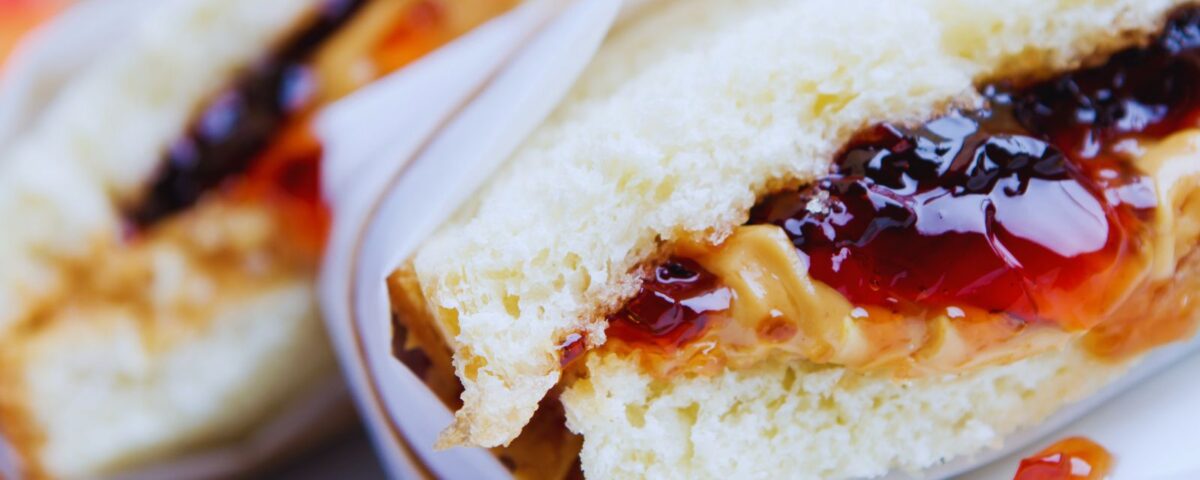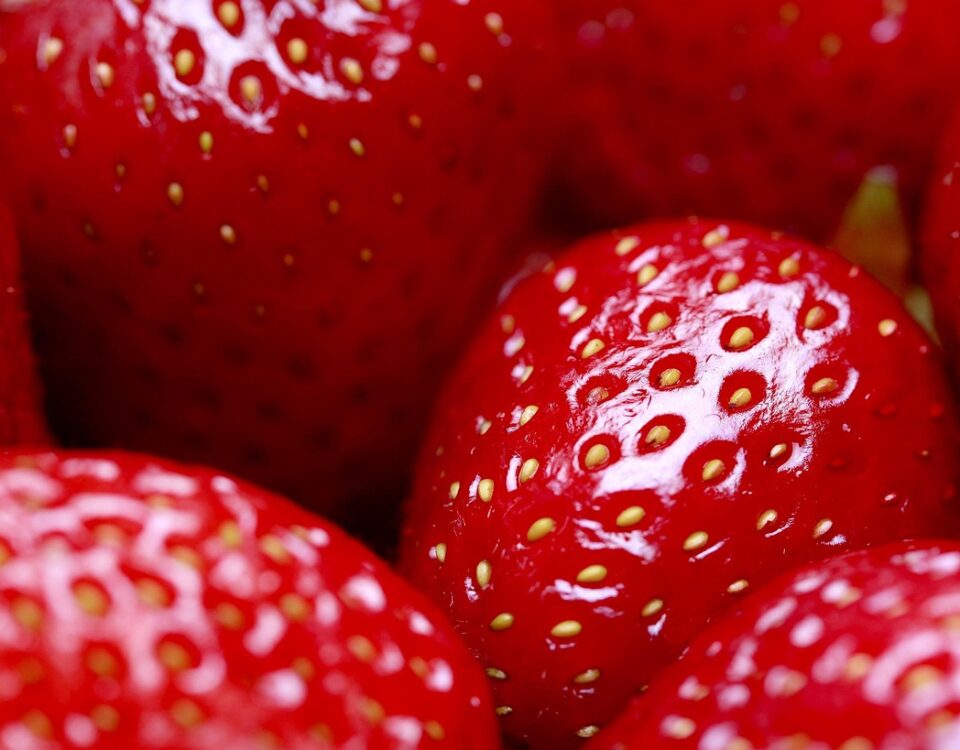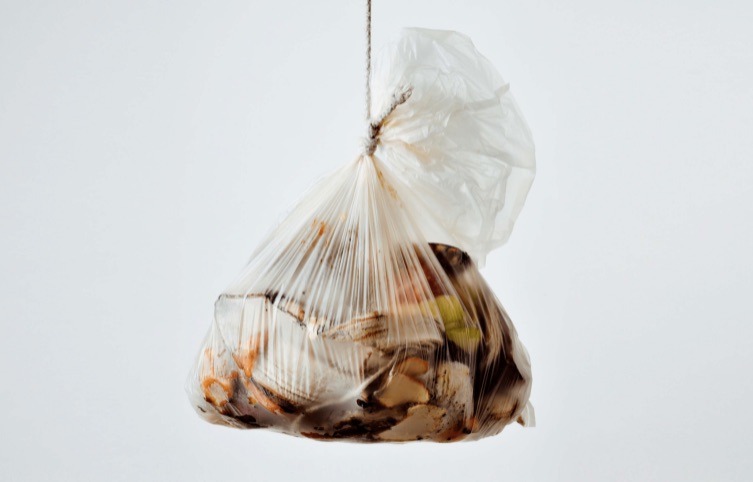
Our Weekly Economic News Roundup: From Jenna’s Advice to Immigrants’ Contributions
October 18, 2025
The Story of a $15,000 Tattoo
October 20, 2025The Uncrustable has been a legend since the mid-1990s. Moms put these mini PB&J sandwiches in their kids’ lunchboxes, the NFL reputedly loves them, and (I am told) California firefighters wolf them down. In addition, if we want an alternative, Trader Joe’s sells Crustless Peanut Butter & Strawberry Jam Sandwiches.
Soon though, maybe not.
J.M. Smucker, the jelly and jam company that also makes Uncrustables, is suing Trader Joe’s. Because the Crustless version is too much like their Uncrustables, Smucker’s claims a trademark violation. As Smucker’s explains, Trader Joe’s is taking advantage of the billion dollars it cost to build the Uncrustables brand and its “good will.”
They do look rather similar:

What happens now is not quite clear since they’ve entered tricky territory. In 2015, a court said a chicken sandwich could not be trademarked. However, the distinctive shape or markings on a food product can receive protection. With Smucker’s pointing to the crimping on its fluffy little “pucks” of white bread, it says Trader Joe’s infringed on its property. Even the bite missing from the Crustless’s packaging is too similar.
Where are we going? About much more than food, the PB&J clash takes us to what we can legally own, buy, and sell.
Copycat Products
In a comparable case, we hope to hear soon whether Aldi violates a Mondelēz trademark. During May 2025, Mondelēz told the court that Aldi’s packaging looks too much like its own for Nutter Butters, Chips Ahoy, and Oreo. Citing a list of products, Mondelēz says Aldi grocery stores’ graphics and colors can confuse customers.
Below, the top row is from Mondelēz while Aldi’s products are below:

In a third trademark case, we can report “fantastic news for fans of disgusting sandwiches.” Because New York’s 2nd Avenue Deli won a 2012 trademark dispute against the Heart Attack Grill of Las Vegas, it could continue offering its “Instant Heart Attack Sandwich.” Still today, at $38.95, the same combination of corned beef, pastrami, turkey, or salami with 2 large potato pancakes remains on their menu.
Our Bottom Line: Intellectual Property
Think for a moment about Apple’s logo, the shape of a glass Coca-Cola bottle and McDonald’s Golden Arches. All protected by trademarks, they are a firm’s intellectual property. Similarly, copyrights assure authors that they control the books they write while patents guarantee inventors’ ownership.
Even for a sandwich or a box of cookies, in a market economy, we need to know what we legally own. Only when property belongs to us through trademarks, patents, and copyrights can we buy and sell what we own. And, only then do we truly have the incentive to invent and innovate.
As always, though, there is a tradeoff. While protected property encourages innovation, it eliminates the competitive strategies that lower prices.
My sources and more: Thanks to the NY Times for reminding me to return to property rights. At econlife, for cookies, marijuana, red-soled shoes, and deli sandwiches, we’ve previously looked at property rights.
Please note that several of today’s sentences were in a past econlife post.
![econlifelogotrademarkedwebsitelogo[1]](/wp-content/uploads/2024/05/econlifelogotrademarkedwebsitelogo1.png#100878)




